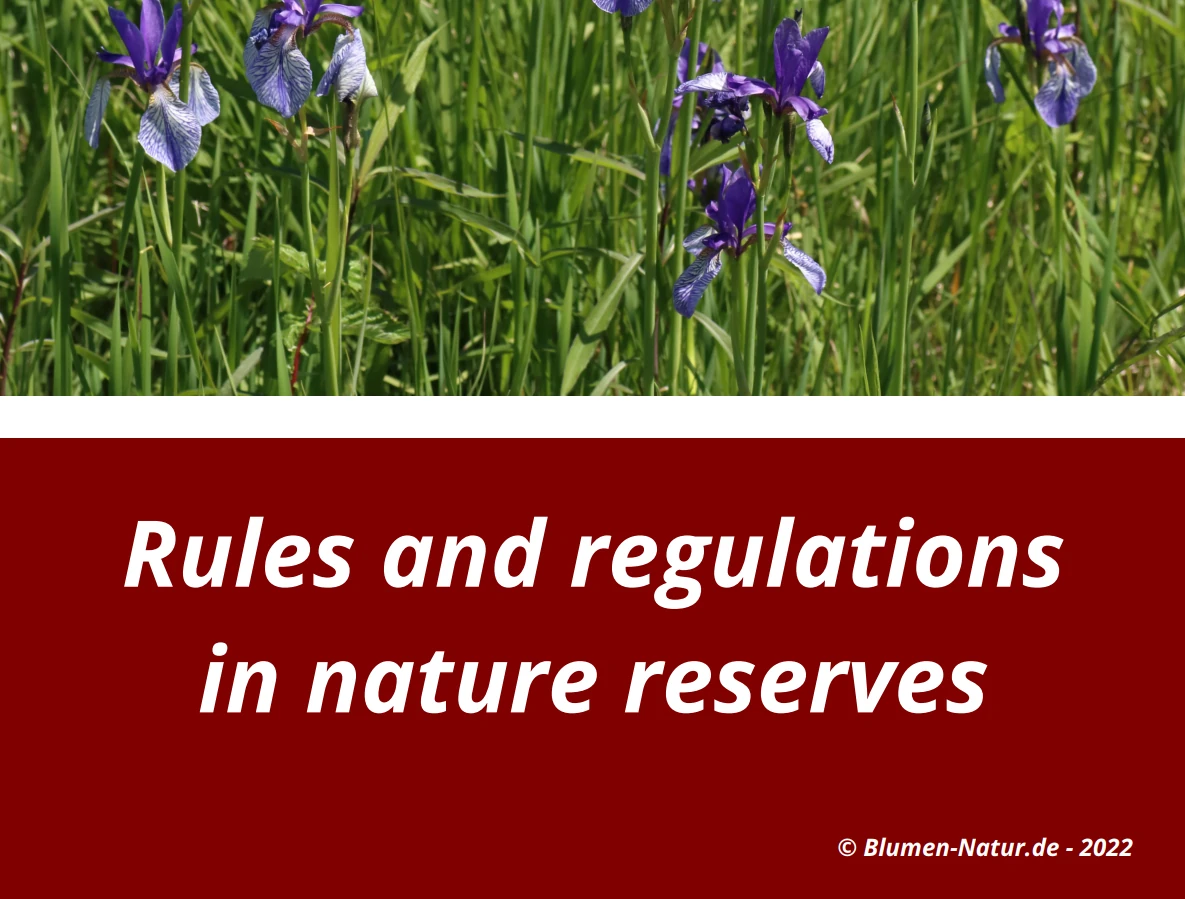11 Minuten Lesezeit
Probably one of the best-known nature reserves on the shores of Lake Constance is the “Eriskircher Ried”. It has become very well known especially because of the flowering of the siberian iris on some areas in the reed. The blossoms of this wonderful-looking plant open as early as the beginning to middle of May.
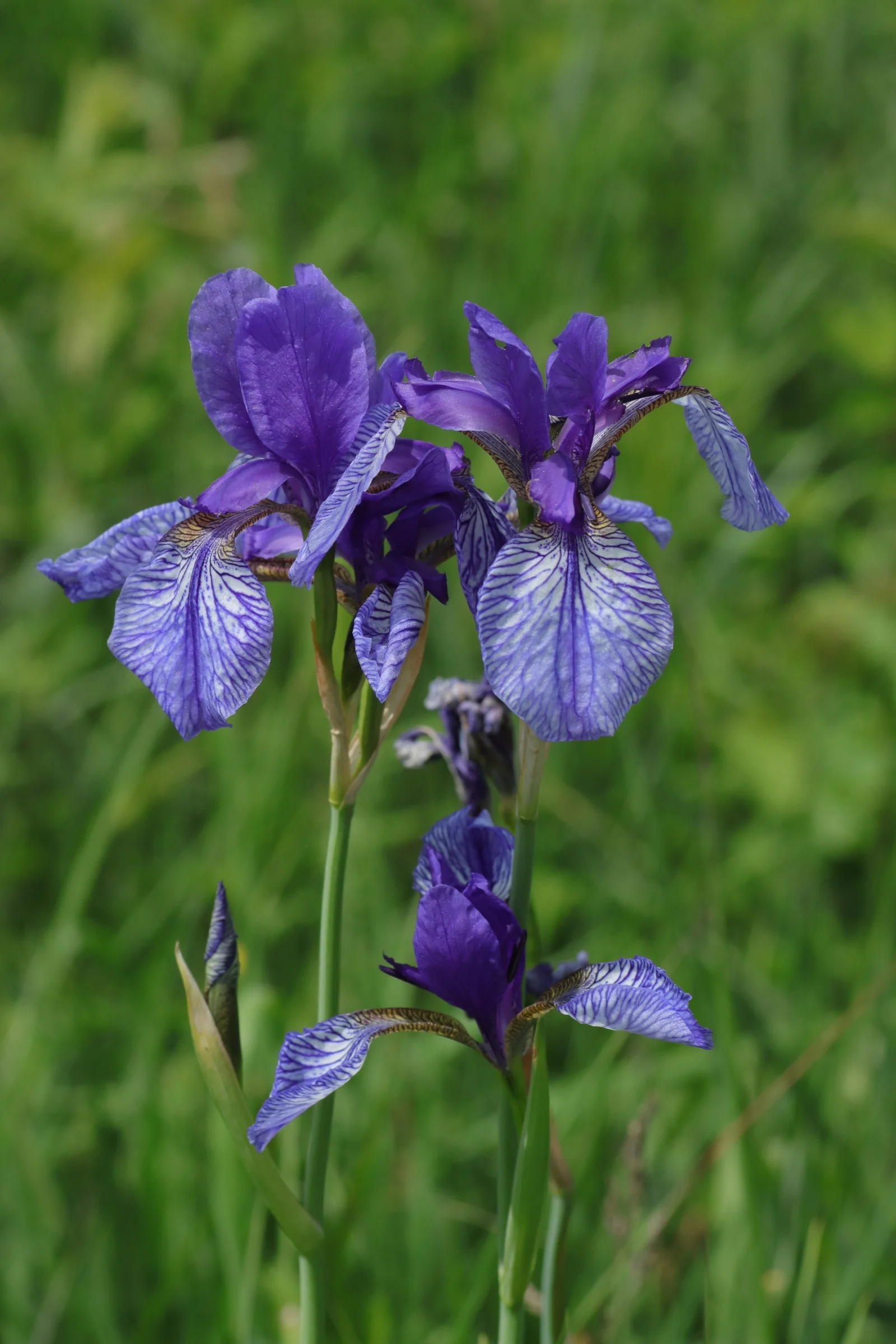

It is mainly found in the damp meadows between the reeds. It is one of the two representatives of the irises that can be found in the reeds. The yellow colored marsh iris can also be found in these meadows.
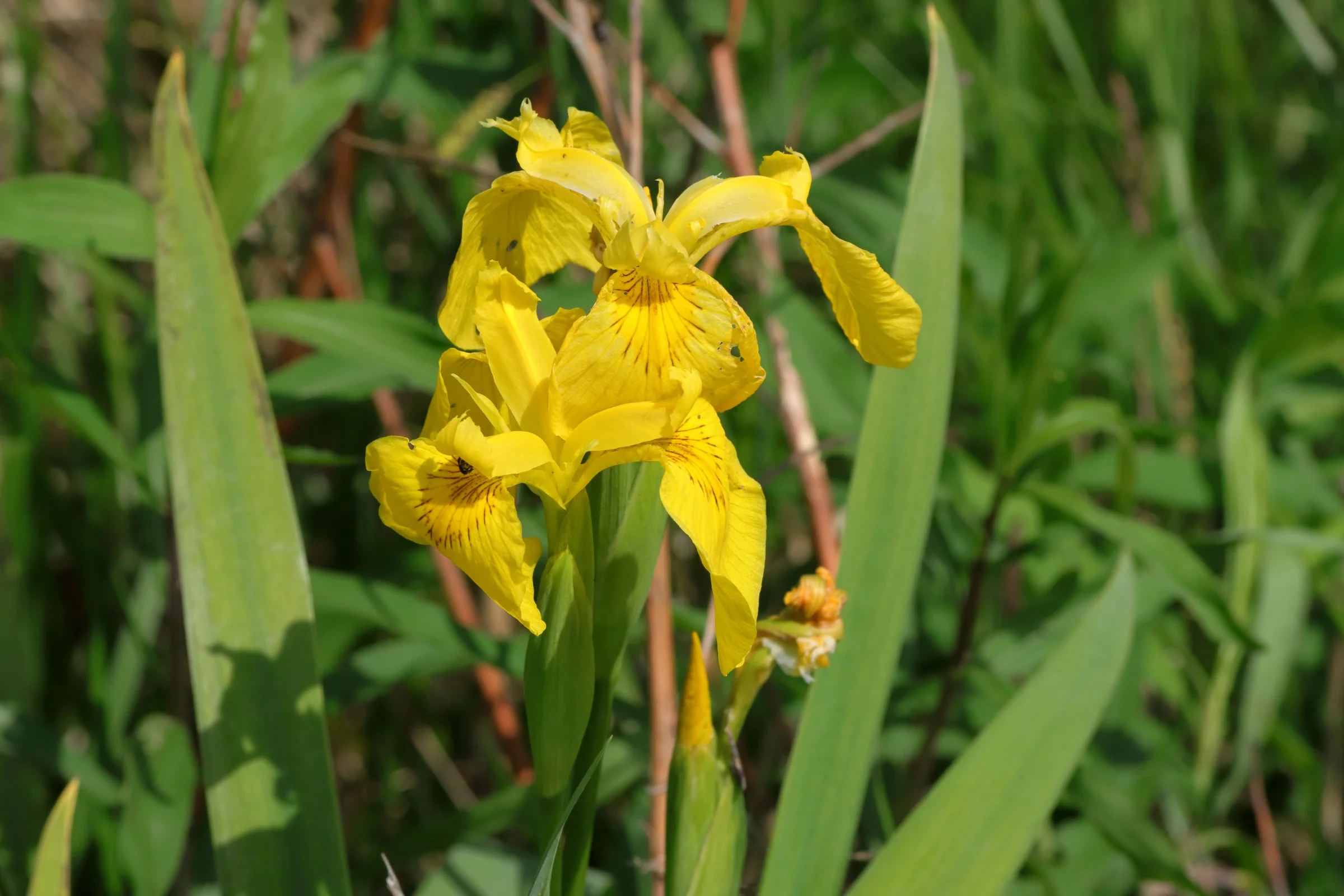
Information about the nature reserve at Lake Constance
The Eriskircher Ried is an important nature reserve between the delta of the river Schussen and the river Rotach. It has a total size of around 550 hectares. Due to the largely untouched shoreline and vast reed meadows, it is a retreat for a variety of plants (approx. 600 different species) and birds. The cut-off areas of the Schussen have also developed into a rare biotope species. They serve as breeding or resting places for various water birds.
From mid-May to early June, the flowers of the siberian iris open and colour the reed meadows in a blue-violet shimmer. Plants that have adapted to the dryness grow on the partially raised areas. For example, kidney vetch with its small yellow flowers is often found here.
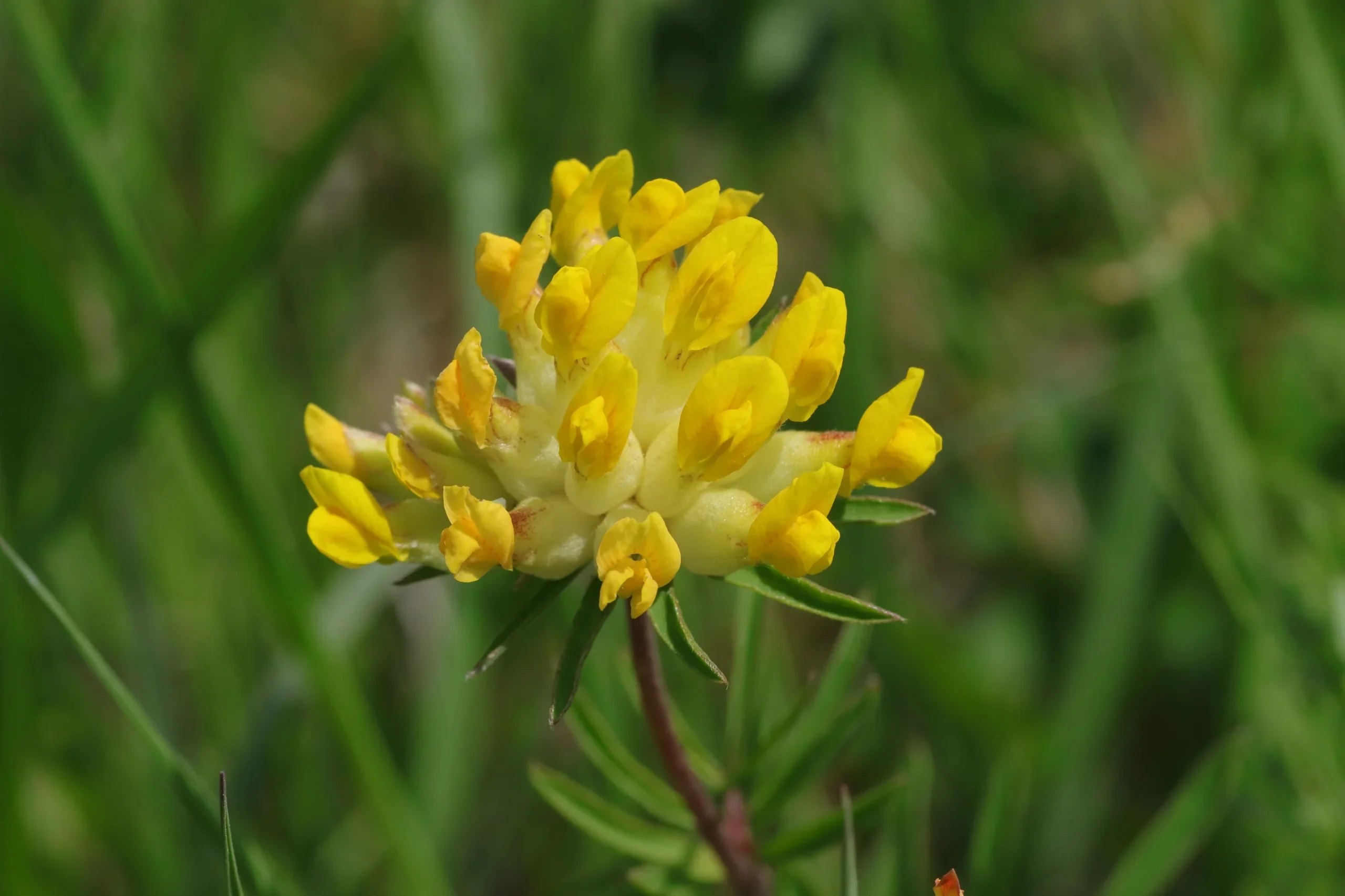
The diverse landscape of the Eriskircher Ried between the reed belt, the reed meadows and the forests of the river Schussen forms an almost unique mixture between nutrient-rich and nutrient-poor areas. Especially the Schussen brings a lot of nutrients to its delta during floods / heavy rain. As a result, mainly nutrient-loving plants thrive on these areas. The reed areas are especially known for low-competition species such as the flesh-coloured orchid – a native orchid.
Regular mowing in autumn on the reedbeds maintains the open reedbed area. This would otherwise be literally overgrown by the fast-growing willows. Even without the former “traditional cultivation”, the reed meadows are kept free of trees and shrubs.
In the middle of the Ried is the Eriskircher public beach. In summer, it is used as an open-air swimming pool / access to Lake Constance. However, the parking spaces at the public beach, which are subject to a fee, are often also the starting point for hikes through the Ried landscape.
Nature Conservation Centre in Eriskirch
The Eriskirch Nature Conservation Centre plays an important role in the conservation of the Eriskircher Ried and provides information for interested people. It is located in the former railway station building. Among other things, exhibitions on the fen and events / guided tours through the fen are offered here. A visit is especially worthwhile during the “iris blossom tours”.
Problems of the nature reserve
Besides the beautiful sides of the Eriskircher Ried, there are also some dark sides. The following section is intended to provide an overview of the problems and solutions.
1. Trampling paths through the protected areas
For several years now, it has been observed that in all parts of the Eriskircher Ried, during the iris blossom, regular trails, sometimes even smaller paths, are formed through the reed meadows. This not only “destroys” the microcosm of insects and plants, but also constitutes an encroachment on nature. The violet flowers of the Siberian iris are beautiful for photos. However, the plants are literally being pushed off the land by the increasing soil compaction! Invasive species can thus spread even more easily. Some of the areas (especially at the crossroads on the way to the public beach) lie completely bare, as even the most resistant grasses are being pushed aside. Only a few plants that have adapted to these conditions remain.
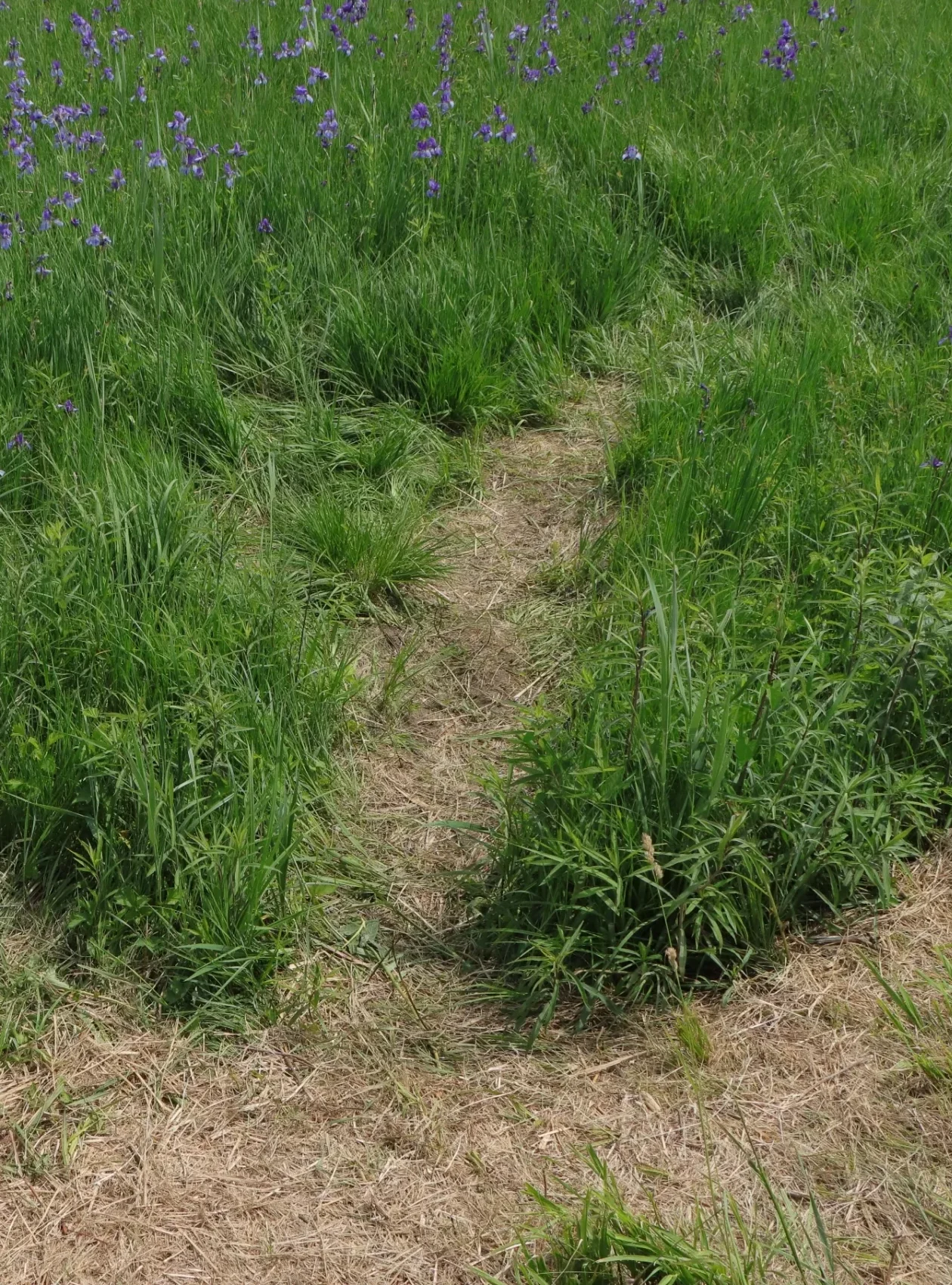
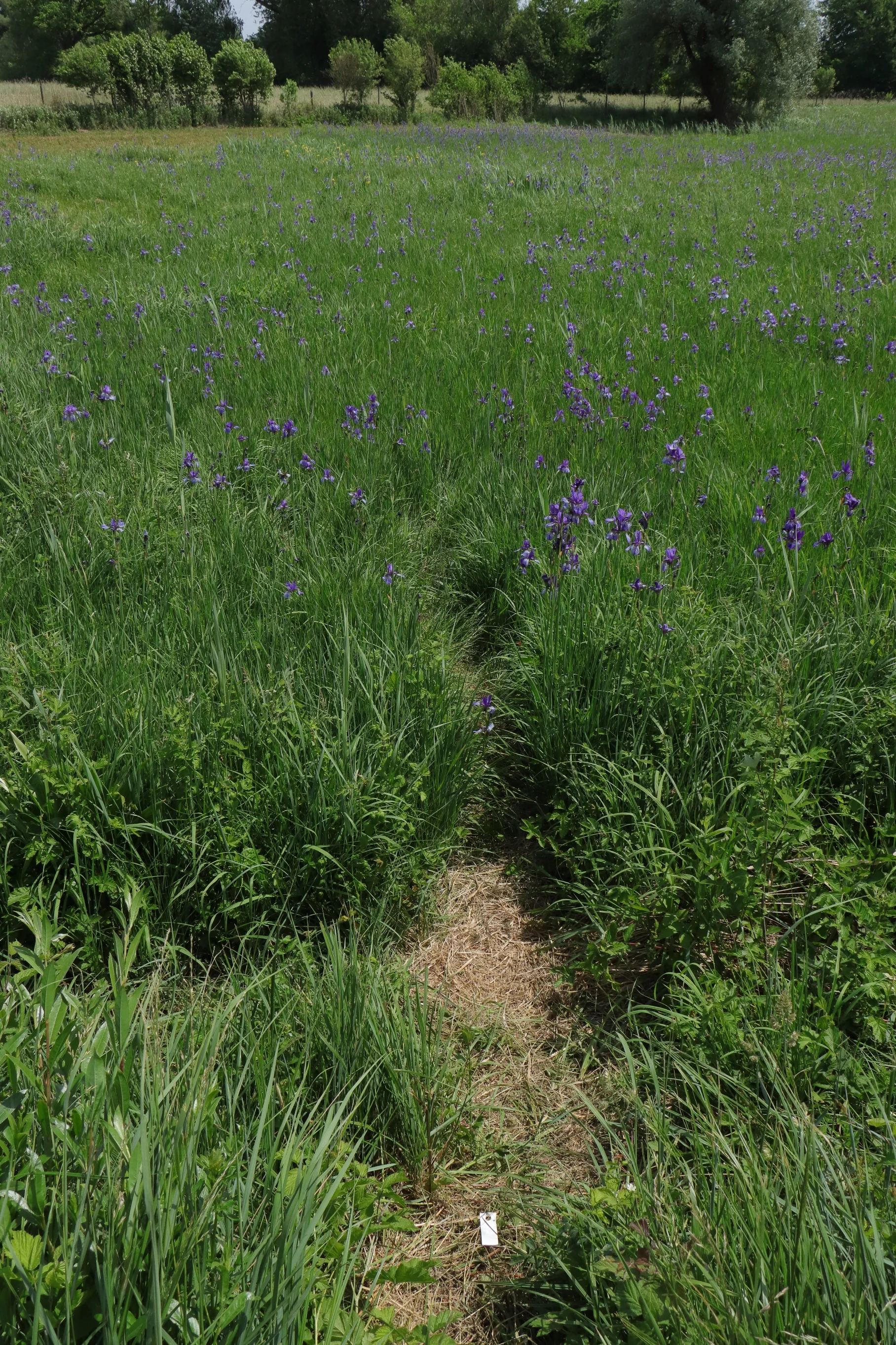
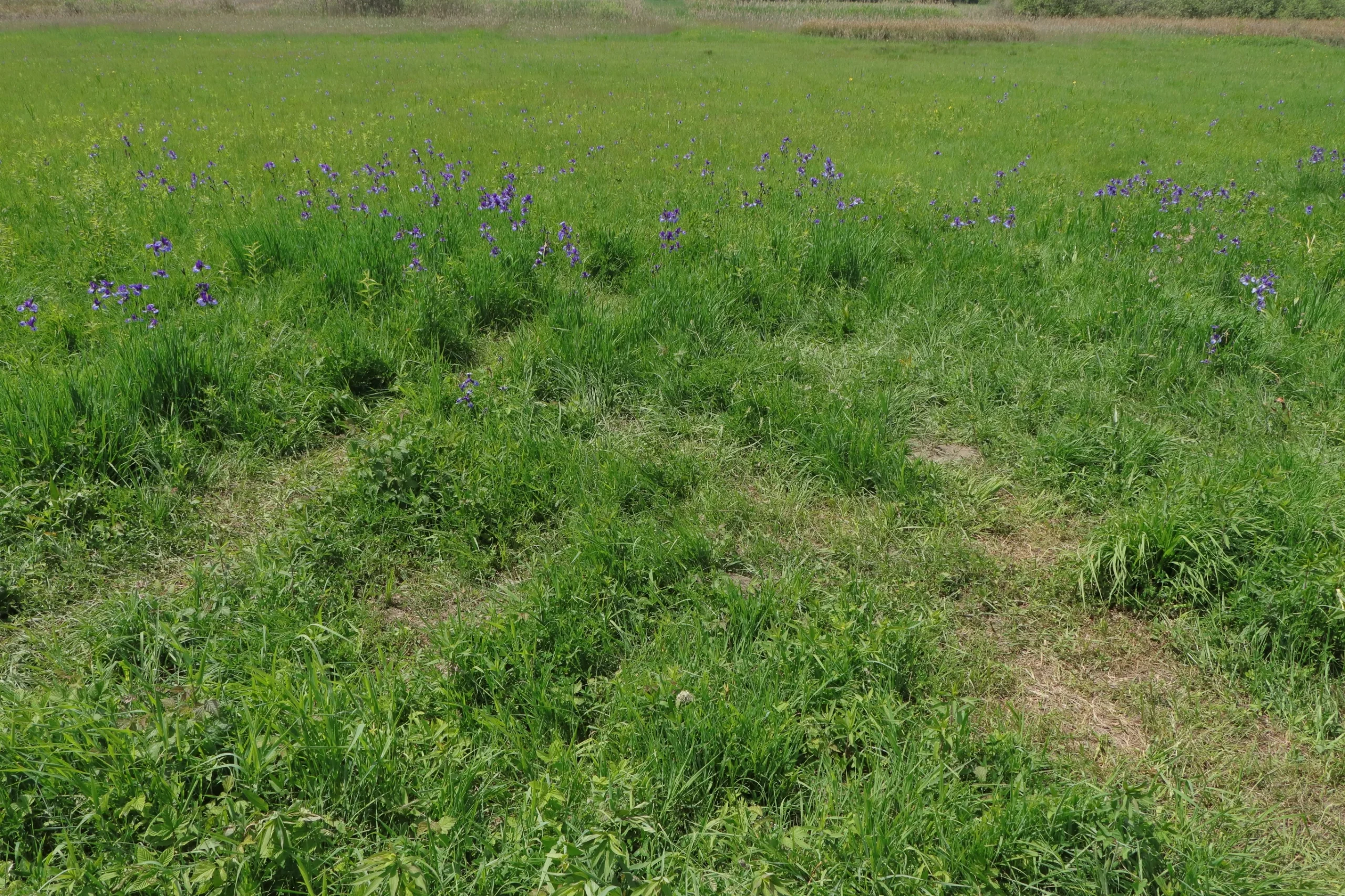
My own opinion – A message to the younger generation: Illegal entry into conservation areas should not be taken lightly. Because if an area is not developed with “paths”, the good resolution always applies: “I won’t enter this area!” The same applies to the reed beds in the Eriskircher Ried. Here you should also stay on the established paths! Because no amount of likes and follows can bring back an “endangered” species. So always assume that it could be the last plant of its kind.
As tempting as the selfie with a splendid flower can be, every step off the established path leads to a loss of biodiversity (species diversity). Because where there is one step, many more will follow. Even if rare plants can make wonderful photo motives, the basic principle still applies: “I’ll stay on the paths. Because I want to protect the plants for future generations.
After all, should our children only learn about plants in biology books?
Michael Richter
2. Impact of the spread of neophytes
The Canadian goldenrod (Solidago canadensis) has become a severe problem of the entire area in recent years. Due to the few human interventions in the protected areas, the plant has been able to spread almost undisturbed, because not all areas can be completely mown during the iris flowering period. However, this is exactly the time when goldenrod has its greatest growth. Anyone who has ever had this plant in their own garden knows how difficult it is to get rid of it. It also spreads very quickly in the meadows and is therefore considered an invasive neophyte.
It thus seems unavoidable to carry out the mowing work during flowering. “They therefore have to be carried out at a time that is unfortunately inappropriate.“ This also pollutes the areas with iris plants.
The Eriskirch Nature Conservation Centre writes: “Mowing during iris blossom??? Yes! They were carried out to push back the American goldenrod, which has been naturalised by humans. This is done by mowing in mid-May when the plant sprouts, and then again about two months later. If nothing is done about the goldenrod, it can overgrow the valuable reed meadows and displace rare native species. Please also do not walk on the mown areas, otherwise small iris plants will be trampled and the soil compacted. Thank you! Your Nature Conservation Centre Eriskirch”
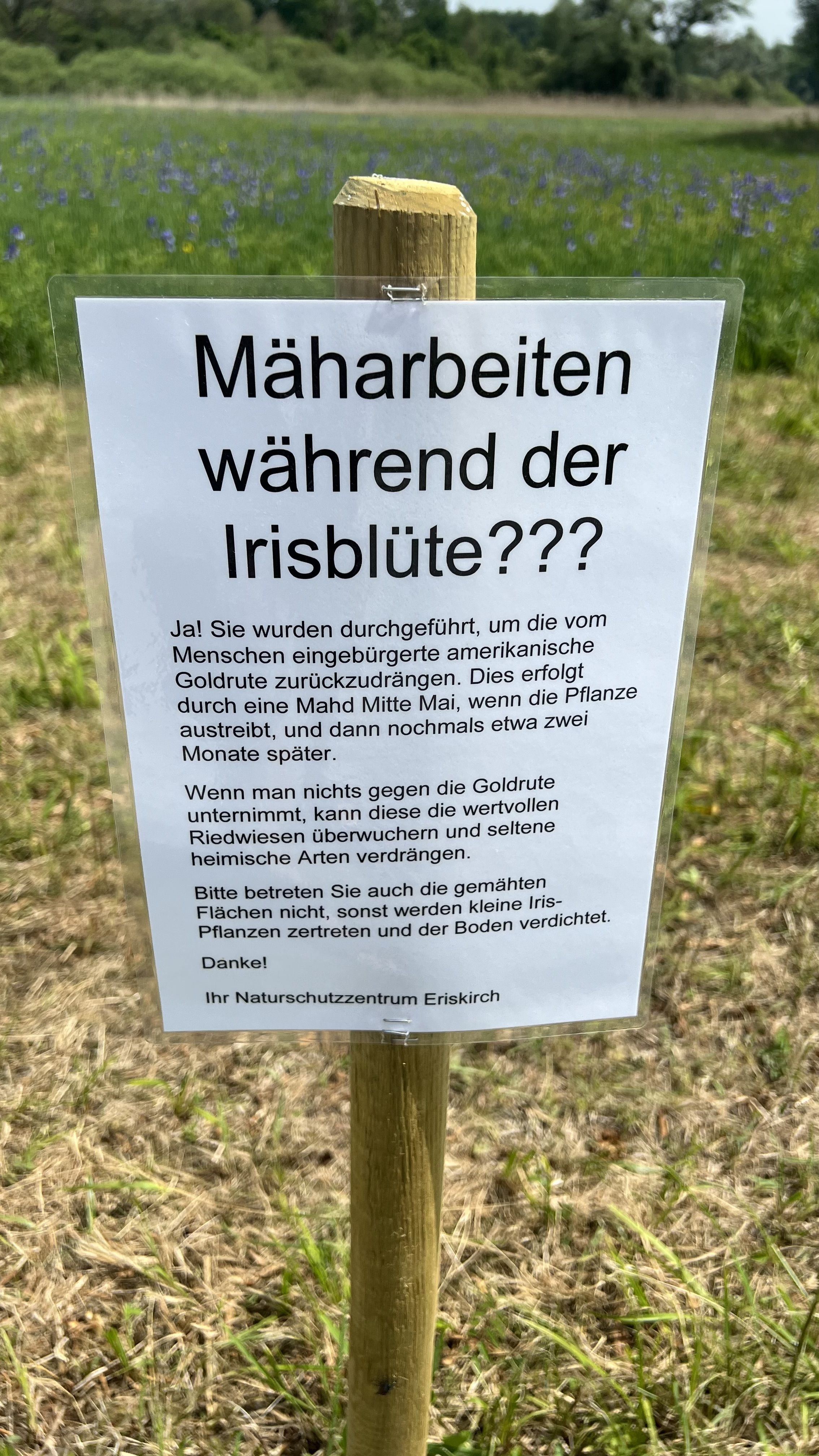
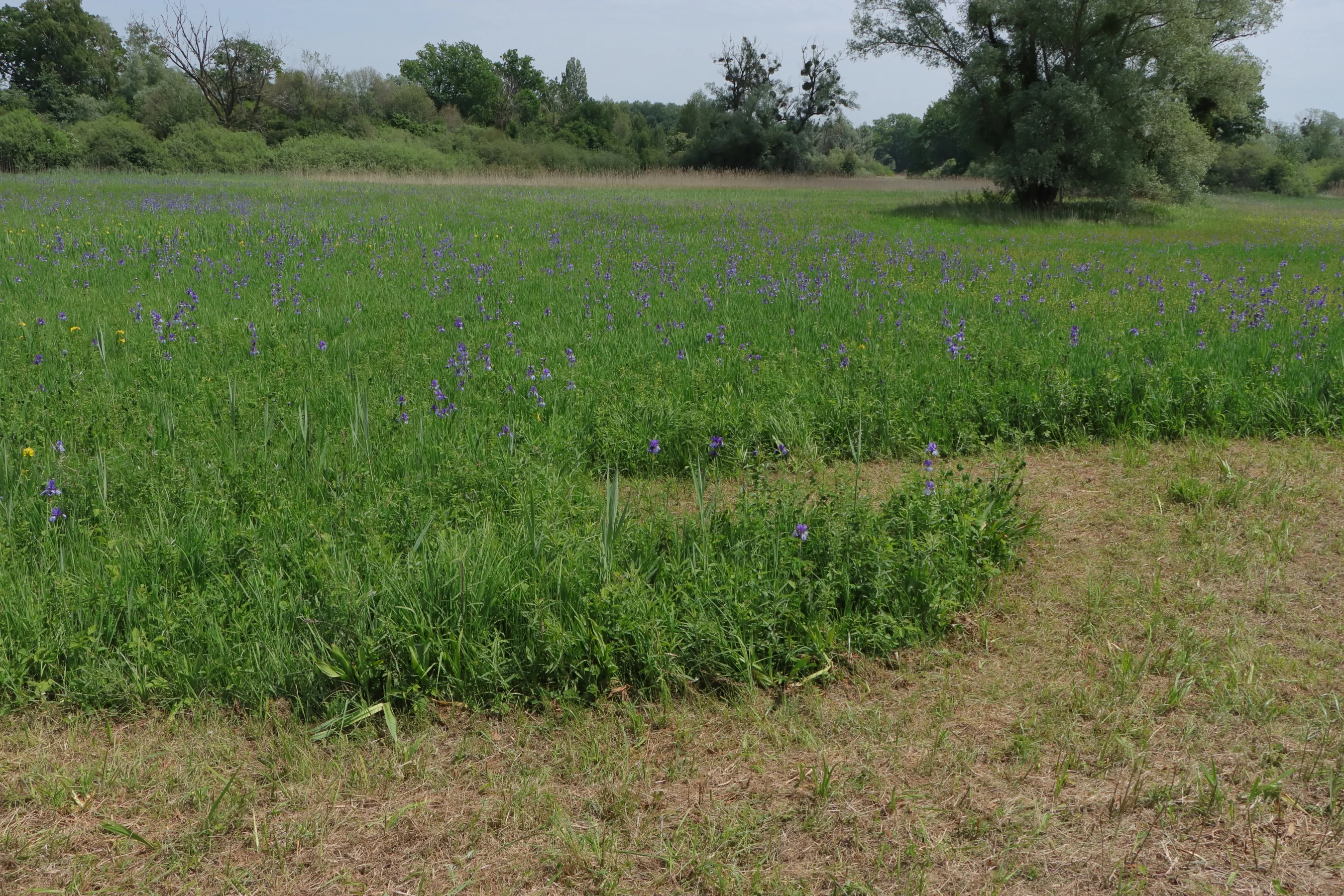
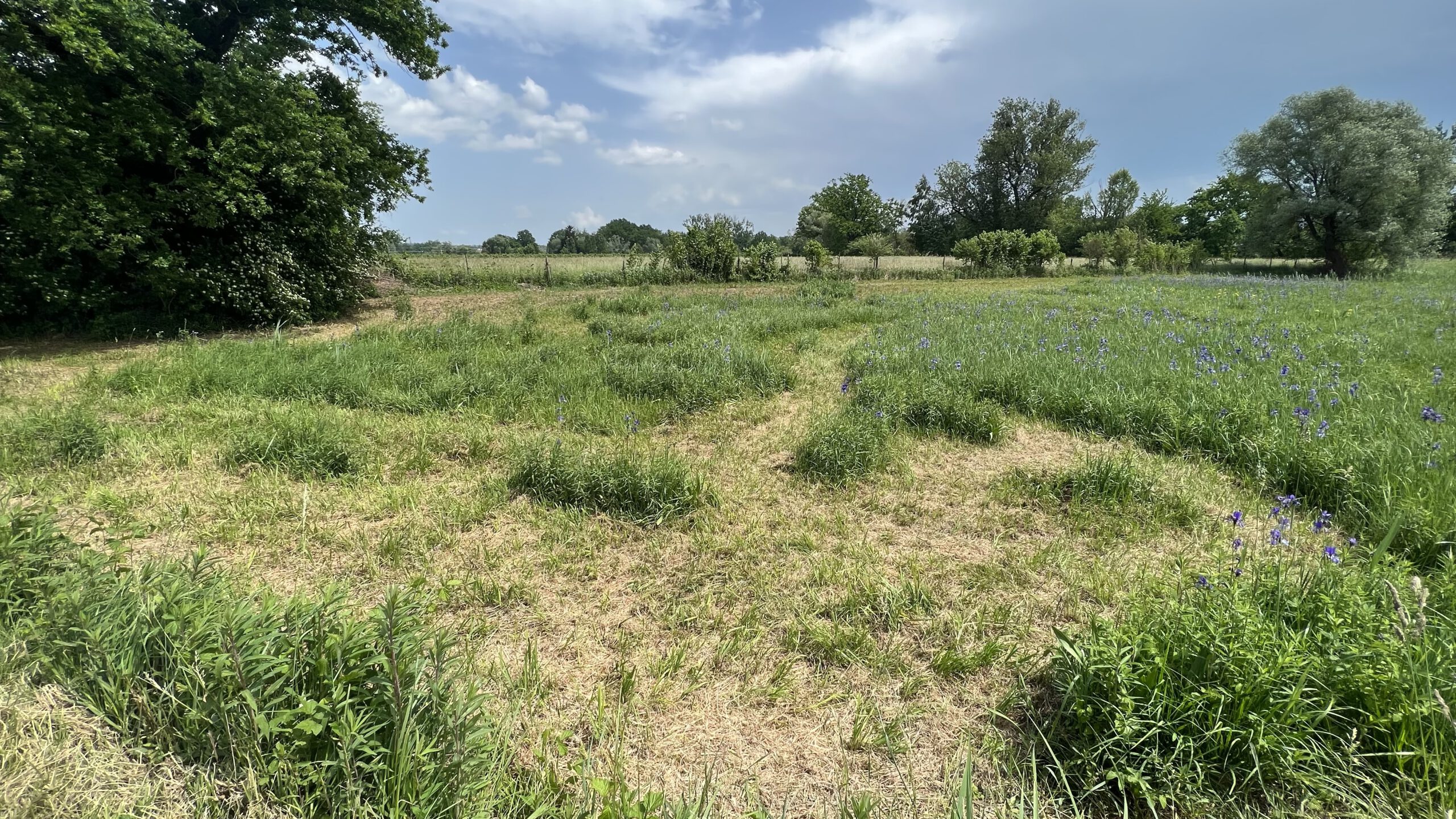
Possible solution to the problem
Pulling out the plant together with digging up the roots is probably the only way to contain the spread of the plant in the long term. But this method does not only have advantages. Pulling out individual plants, as is done in some other areas with the glandular touch-me-not (Impatiens glandulifera – also known as Indian touch-me-not) and the Japanese knotweed (Fallopia japonica), is not a solution here either. If the measures were carried out by a large number of helpers, there is again the danger of compacting the soil too much. This would cause more damage to the iris (which form shallow roots). A later mowing after the iris and orchids have faded would be a gentler, albeit less effective, method of combating goldenrod.
3. problem of biodiversity loss: involuntary victims of mowing.
Due to the sometimes very early mowing in mid-May / early June, not only the unwanted plants such as Canadian goldenrod and Japanese knotweed are mown down. In part, the populations of rare orchids worth of protection are also decimated. They fall victim to mowing for the year. They will sprout again the next year. But the plants should not be subjected to this procedure too often, as they react very strongly to changes.
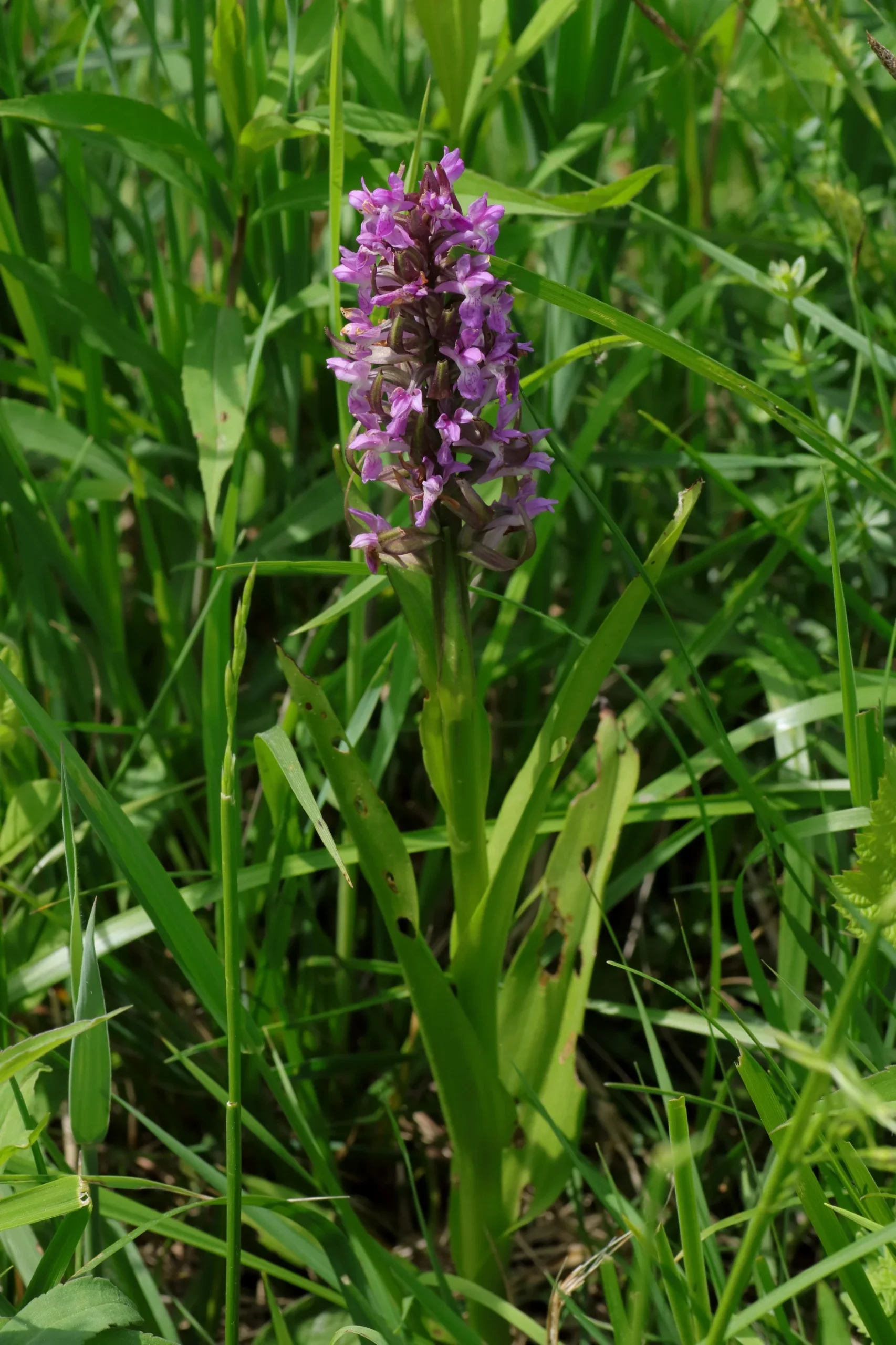
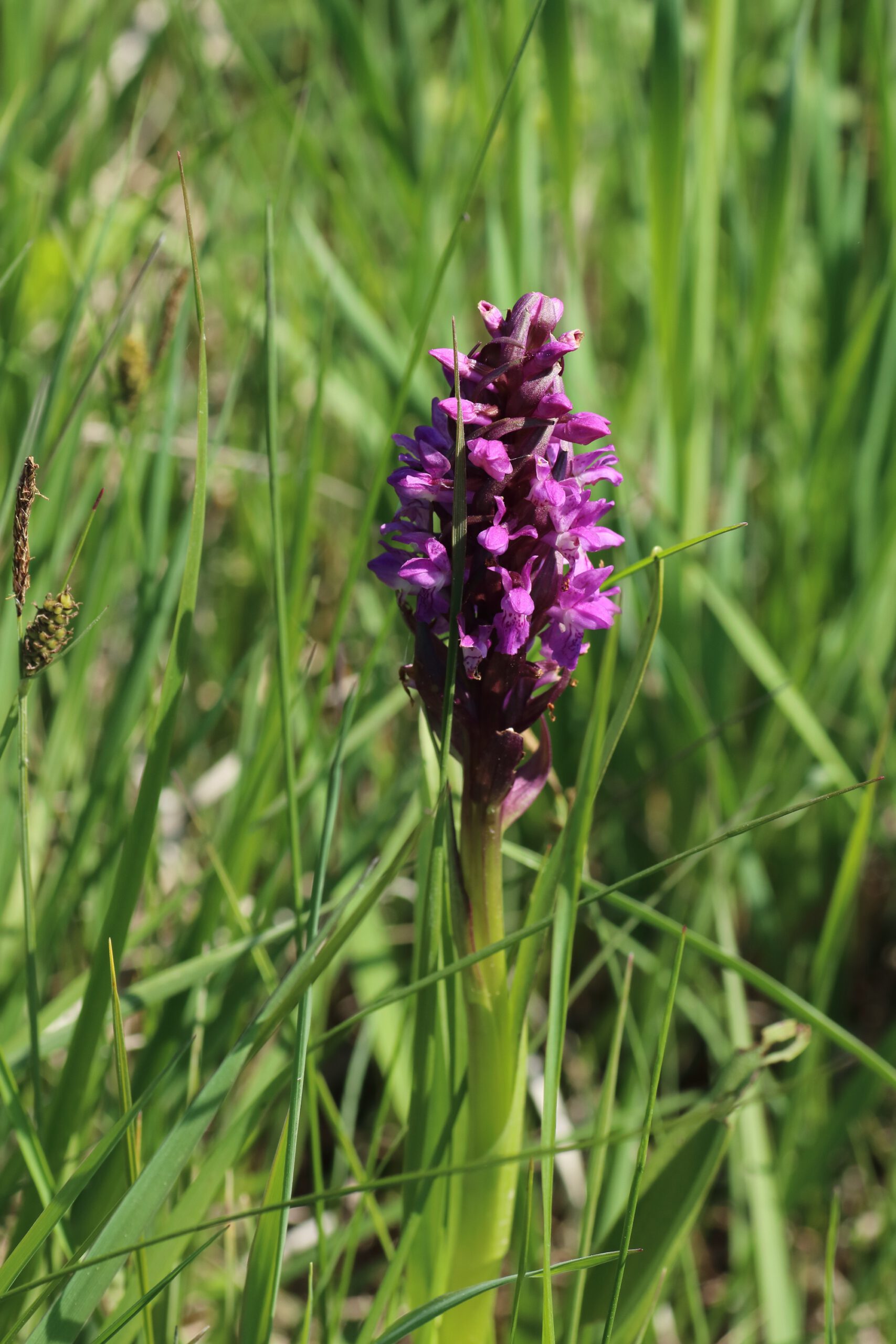
The pictures show the flesh-coloured orchid, an orchid already classified as “highly endangered” in Germany. The Eriskircher Ried has a larger population of the plant. However, mowing in the meadows has also unintentionally mown down some of the orchids. The radical mowing is nevertheless necessary to protect all plants.
4. Entering the (freshly) mown meadows
In addition to the problem of entering individual parts of the protected area, there is also the problem of entering the partially freshly mown meadows. Walking on the (freshly) mown meadows is in no way a good idea. However, people are further encouraged to do so because the flowers are now “easier” to reach. However, this damages the young, newly sprouting plants. Again and again, it can be observed that the mown-off parts of the meadows become popular “photo spots”. But no amount of likes for photo can undo this destruction! Where there is one step, many will follow. It is considered “okay” to enter the areas, as others do the same.
The rule still applies: “Don’t leave the paths!”
5. Digging up or picking off plants
The last problem (there are by far more problems) can be considered digging up or picking off plants. Each of the plants has adapted to the special microclimate prevailing in the reed. This means that digging up and planting in the home garden is useless! Nevertheless, there are individual cases where plants are taken from the nature reserve; sometimes just as a “nice bunch of flowers”. This is strictly forbidden in any case!
Behaviour in nature reserves
The etiquette and correct behaviour in nature reserves can be read again in this PDF. It is important to preserve the populations of the partly endangered plants also for future visitors and the future generation!
PDF – Behaviour in nature reserves
